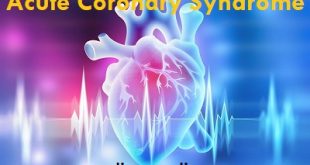Definition
Ascites is the enormous accumulation of fluid (pale yellow and clear fluid) in the abdominal peritoneal cavity. Fluid fills between the abdomen and the organs. This cavity is the lining between the abdominal wall and the stomach. This cavity is located below the chest cavity and it is separated by the diaphragm, the ascitic fluid is produced due to variety of disease such as cancer, liver disease, kidney failure and heart failure.
Ascites
History
Ascites were recognised in ancient times. In 20 B.C Celsus first described the technique of paracentesis for aspirating the fluid from the peritoneal cavity by using a bronze tube with flanged collar to drain fluid.
In 1827, Ludwig van Beethoven gave large volume paracenteses to one of the famous patients. whose physician wrote about his deathbed with the following description:
“‘The tremendous volume of the water accumulated called for immediate relief; and I found myself compelled to advocate the abdominal puncture in order to preclude the danger of sudden bursting.’ Beethoven had almost immediate relief, and when he saw the stream of water, cried out that the operation made him think of Moses, who struck the rock with his staff and made the water gush forth. ” Two days later Beethoven died. At autopsy his liver was described as “shrunken to half its normal volume…it was beset with knots the size of a bean…the spleen was double its proper size and dark coloured and firm.” (Adams)
Epidemiology of Ascites
Mortality/Morbidity
Wandering patients with a scene of cirrhotic ascites have a 3-year death rate of 50%. The advancement of hard-headed ascites conveys a poor visualization, with a 1-year survival rate of less than 50%.
Sex
Healthy men have almost no intraperitoneal liquid; however ladies may regularly have as much as 20 mL, contingent upon the period of their menstrual cycle.
Types
Ascites is divided into two types. It is classified based on the amount of protein present in the fluid. The most useful system has been developed based on the albumin fluid present in the ascites when compared to serum albumin (albumin measured in the blood). This is called the Serum Ascites Albumin Gradient or SAAG.
Ascites related to portal hypertension (cirrhosis, congestive heart failure, Budd-Chiari) is generally higher than 1.1.
Ascites caused by other reasons (malignant, pancreatitis) is lesser than 1.1.
Risk factors
Some of the common risk factors that cause the ascites are as follows:
- Hepatitis B
- Hepatitis C and
- Long standing alcohol abuse
- IV drug use
- Adverse reactions due to medications
Other underlying conditions such as
- Congestive heart failure
- Malignancy and
- Kidney disease
Causes of Ascites
The main cause is liver problems such as follows:
Acute liver failure: Acute liver failure results in ascites due to the adverse injury in liver cells or due to some medications that cause adverse reactions in the liver. For example, acetaminophen overdose causes liver failure.
Cirrhosis: It is a form of liver disease in which the liver is damaged by replacing it with scar tissue. As the more liver tissue is lost the gradual liver failure occurs. The most common cause of cirrhosis such as alcoholic hepatitis, viral hepatitis and fatty liver diseases.
Budd-Chiari syndrome: this is due to the blockage in the vein that drains the liver. This causes abdominal pain and hepatosplenomegaly (enlargement of liver and spleen).
Cancer: It can also manifest as a result of cancers called malignant ascites.
Other causes of failure:
Nephrotic syndrome: It is the damage of kidney due to the protein leakage into the urine and causes decrease in oncotic pressure and may results in ascites.
Heart failure: It is the inability of the heart muscle to pump the fluid in in the blood vessels. This result in problems such as fluid fills up in the lungs and causes other organs to fail. This fluid leaks into the peritoneal cavity and forms ascites.
Disorders of the pancreas: Pancreas disorders also cause ascites. Pancreas disorders such as acute pancreatitis (inflammation of pancreas), chronic pancreatitis and pancreatic cancer. Acute pancreatitis causes fluid accumulation due to the inflammatory response. Chronic pancreatitis is due to malnutrition that causes decrease in total body protein, loss of oncotic pressure and ascites. Pancreatic cancer causes direct fluid loss.
Irritation of the peritoneal fluid: Due to the irritation of peritoneum, inflammation occurs thus it causes fluid leakage. Irritation is due to the infection or a malignancy.
Hypothyroidism: Ascites found uncommonly in hypothyroidism. Low thyroid function can be treated after prolonged time. When the thyroid level in the body becomes normal, ascites will also resolves.
Manifestation of Ascites
Usually, very little amount of fluid in the abdomen does not show any symptoms, but when a moderate and massive amount of fluid retention can experience few signs and symptoms.
- Vomiting and nausea
- Abrupt weight gain
- Abdominal pain
- Sudden increase in waist size
- Abdominal swelling (distention)
- Feeling discomfort while sitting and sleeping
- Abdominal feels stretched
- The navel is protruded out or flat
- Shortness of breath due to pressure applied to the lungs by swollen abdomen
- Loss of appetite
- Swelling of legs, hands, and ankles due to accumulation of excess fluid
- Heartburn, vomiting, and indigestion
- Bloating
- Fatigue
Complications of Ascites
- Infection of peritoneum called spontaneous bacterial peritonitis (SBP)
- Untreated SBP leads to fatalities
- Protein malnutrition
- Hepatic encephalopathy
- Kidney failure (Hepatorenal syndrome)
- Mental confusion
- Fever above 100.5°F (38.05°C)
Diagnosis and Testing of Ascites
If the above symptoms and signs persist for a long time seek medical attention immediately. Your doctor performs the following exams and tests.
- A complete blood count (CBC) is helpful to find the infections, anemia, and liver functions. Various other blood tests that are useful for analyzing the ascites are LFTs, Clotting screen, and TFTs.
- Electrolyte tests: It is carried out by routine blood tests called U&Es, it stands for Urine & Electrolytes.
- Paracentesis or Ascites tap: To find the causes and conditions of ascites, your doctor may use a thin needle to aspirate a sample of ascites fluid from the abdomen for testing. It is a less invasive procedure.
- Urinalysis: The Renal function of the kidney is checked through routine urine test in case of kidney failure.
Imaging studies
- Ultrasound: It is used to access the ascites fluid and liver function in the abdominal region. Ultrasound can also be used to cirrhosis and malignancy because of ascites.
- Magnetic resonance imaging (MRI): If ultrasound fails to get the proper information on ascites, MRI is used to confirm and find the damage of organs in the abdomen. Also, it is used to differentiate ascites from fat in the abdomen.
- CT- Scan: CT is also used to diagnose the disease conditions of spleen, liver and umbilical veins.
Liver biopsy
- A small tissue is collected from the liver to detect cirrhosis, which is a cause of ascites development. A biopsy is done through the laparoscopic procedure.
Management of ascites
The condition of ascites is treatable with proper treatment options and care.
Diuretics (Water pills)
- Diuretics are most commonly used for treating ascites. It is helpful to flush the extra fluid from the abdomen by reducing the amount of salt.
- The most common diuretics are Furosemide (Lasix) and Spironolactone (Aldactone).
- While administering diuretics your diet should be low water and low salt otherwise the fluid will return back into the body.
Therapeutic paracentesis
Therapeutic paracentesis is a procedure to drain the fluid from the abdomen. A needle or a tiny tube is placed in the peritoneal space and fluid is withdrawn under a sterile condition. This tube drains about 4 to 5 liters of abdominal fluids very safely. For severe cases of malignant ascites, this procedure can be more effective than diuretics.
Antibiotics
- Antibiotics are used to reduce the chances of getting infections in the peritoneum of abdominal organs.
- Most cases of SBP during ascites are due to gut bacteria’s such as coli, Klebsiella, even though Streptococcal and staphylococcus also cause infections.
- Cefotaxime (2 gram) is given intravenously for every eight hours.
Surgery
For more severe cases of ascites, surgical interventions can help to control.
- A permanent tube called Transjugular intrahepatic portosystemic shunts (TIPS) is placed between the portal venous system and the systemic venous system by that portal pressure can be reduced.
- In the advanced stages of cirrhosis, liver transplantation may be considered as a cure for ascites in case of liver failure.
- Liver transplant is a complex process, which requires a very close attention and monitoring of ascites patients by transplant specialist.
How to prevent Ascites?
- Quit alcohol, this can prevent being affected from liver cirrhosis.
- Low salt diet (less than 1500mg/day of sodium).
- Get vaccinated to escape from hepatitis.
- Patients with cirrhosis should limit the use of Nonsteroidal anti-inflammatory drugs (ibuprofen). This may reduce the blood flow to kidney, thus reducing the excretion of water and salt from the body.
- Avoid drugs that given intravenously. Since hepatitis can spread through used needles.
 Diseases Treatments Dictionary This is complete solution to read all diseases treatments Which covers Prevention, Causes, Symptoms, Medical Terms, Drugs, Prescription, Natural Remedies with cures and Treatments. Most of the common diseases were listed in names, split with categories.
Diseases Treatments Dictionary This is complete solution to read all diseases treatments Which covers Prevention, Causes, Symptoms, Medical Terms, Drugs, Prescription, Natural Remedies with cures and Treatments. Most of the common diseases were listed in names, split with categories.








very nice studey
how ascites can be caused after post cholesestectomy
If no drains are used after post cholecystectomy, bile secretions tend to leak into the abdomen causes ascites.
nice literature
salute
How can I treat ascites, and what are the anti-biotics be using
The basic treatment for ascites is a low-sodium diet and bed rest. If diet is ineffective, people are usually also given drugs called diuretics (such as spironolactone or furosemide).
to protect this what can be use
Please read the steps given in the prevention section in the post.
I have cirrosis of the liver (PBC) what tremeant or what drug do you recomend to slow the deases.Thank you
Please consult a doctor.
please if the woman above 60years in age still mensurate or blinding also has swealop stomack and body Tyne how to conrol it, but when we do the test they multiple cytis in the stomack ,or drug to conrol it before getting money for operation. thanks
Please consult a doctor.
my mother is facing the same problem she have lot of acites in he abdomen how to reduce acites with out drean is there any medecen to reduce extra fluid
please consult a doctor.
last may 12 I was gone an open cholesystectomy surgery it was hard procedure since my organs are all affected my gallbladder was removed and stones,i have 50/50 chance of survival but God is good my surgeon was very careful for that 5 hours surgery, and now I am very careful with the food I eat,also the diet.thank you.
is it possible to aspirate ascite directly from the abdomen?
Yes, the current treatment procedure involves the same.
Any good medicine for livery
i m one of the victim help. me they didn’t find any but my stomach is swelling what can i do?
Please consult a doctor as soon as possible.
sir ,if SAAG is 1.21
with clear ultrasound, U/E, and blood test.sir , what is your suggestion.
Please consult a doctor.
how can we treat ascites
Please have a glance into the treatment section in the post.
pls what drug can i to put total hipertities b
please consult a medical practionner.
am requesting this Medical book but my place is South Sudan which is remote area and Thanks
Ascity is ocurred as a liver complication .
Cirrhosis of the liver is the most common cause of ascites.
how frequent is the diagnosis made in the US?
Please consult a doctor to get a diagnosis.
how common is this disease?
Ascites is most common in people who have liver disease.
what are the most physical finding to perform before you diagnosed asites
Diagnosing ascites involves assessing physical findings such as visible abdominal distension, flank dullness on percussion, shifting fluid, bulging flanks, and the presence of a fluid wave. These signs, along with a patient’s medical history and further diagnostic tests, aid in confirming the presence of ascites and identifying its underlying cause. Seeking prompt medical attention is crucial for a comprehensive evaluation and diagnosis.
pls can I take livolin?
Livolin is used in the treatment of Chronic liver disease and Cirrhosis of the liver.